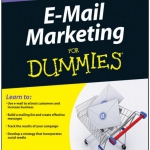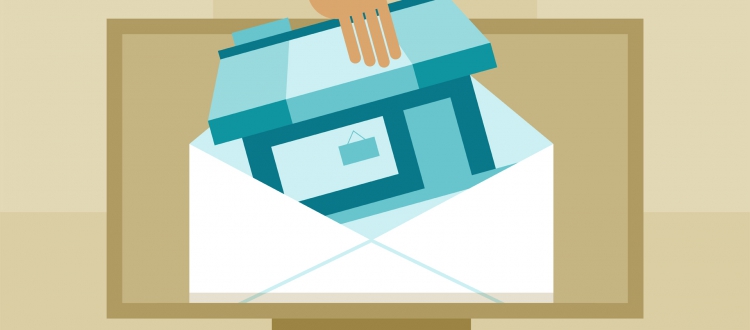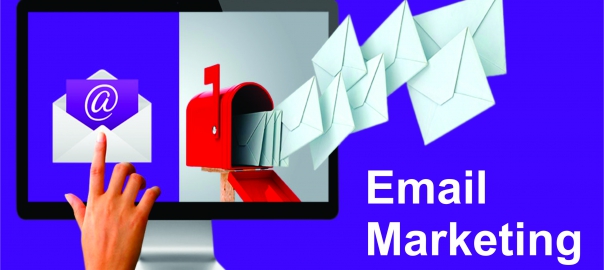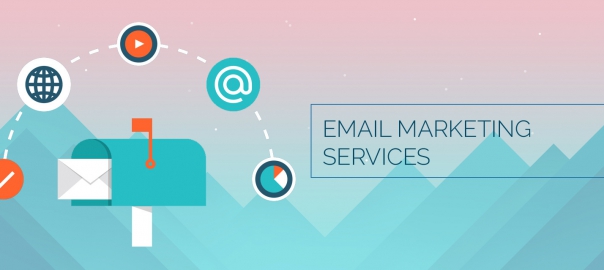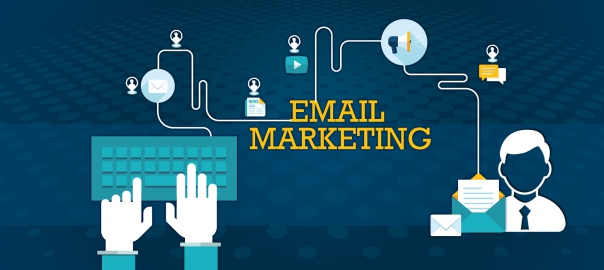Tips for keeping the practices of EMPs and ISPs
The following sections include tips for keeping up with consumer trends and the practices of the most reputable EMPs and ISPs.
Table of Contents
- 1 - Using full disclosure during e-mail address collection
- 2 - Allowing audience to unsubscribe from receiving emails
- 3 - Sending e-mail content in line with your audience’s expectations
- 4 - Deciding When and How Often to Send
- 5 - Determining how many e-mails to send
- 6 - Choosing the proper e-mail length
- 7 - Figuring out how often to call for action
- 8 - Setting e-mailing frequency by relevance
- 9 - Choosing the best day and time for delivery
Using full disclosure during e-mail address collection
The CAN-SPAM Act encourages you to have affirmative consent with your e-mail list subscribers to send them a commercial e-mail, but the most professional practice is to use an extra measure of disclosure when asking for permission. Here are some ways for you to take affirmative consent to a more professional level:
Everywhere you collect e-mail addresses, ask for explicit permission to send email. Whether you exchange business cards with prospects in person or collect email addresses through a form on your Web site, make sure you obtain explicit permission as part of the process. It’s also a good idea to keep a record of your permission exchanges in case you’re faced with a legal complaint in the future.
If you use e-mail list checkboxes on Website forms, keep each checkbox cleared (deselected) as the default. For example, if you use your Web site’s shipping form to collect e-mail addresses, require your shoppers to select a checkbox to add themselves to any nontransactional e-mail lists. Make sure that the checkbox also includes a description of the types of e-mails your shopper is signing up for.
Send a professional welcome letter e-mail to all new e-mail list subscribers. Make sure that the welcome letter e-mail arrives within 24 hours of the initial subscription request and also include privacy information and a description of the types and frequency of e-mails that the new subscriber receives. Your E-Mail Marketing Provider can send an automatic e-mail when folks join your e-mail list through an online form.
Send periodic permission reminders to confirm that your e-mail list subscribers are still interested in your e-mails. You can send a periodic business letter or include a few sentences at the top of your e-mails asking your subscribers to confirm their interests.
Allowing audience to unsubscribe from receiving emails
The CAN-SPAM Act requires that you include a simple way to allow your audience to unsubscribe from receiving future e-mails from you, but the law doesn’t specify which mechanisms are appropriate for processing unsubscribe requests.
You can ask your subscribers to reply to your e-mails with their unsubscribe request and manually keep track of your unsubscribed prospects and customers, but this process can be tedious with larger lists. The most professional practice and the most automated for processing unsubscribe requests, is to use an EMP to automatically and permanently remove anyone who unsubscribes from all e-mail lists by clicking a link.
Most reputable EMPs automatically insert a one-click unsubscribe link into your e-mails. When a subscriber clicks the link, the EMP automatically removes the subscriber or changes the status of the subscriber in the EMP’s database to unsubscribed so that the subscriber stops receiving e-mails immediately.
Providing an unsubscribe link gives your potential e-mail list subscribers confidence when subscribing to your e-mail lists and encourages them to differentiate your e-mail from spammers who use dubious opt-out methods if any.
Sending e-mail content in line with your audience’s expectations
The CAN-SPAM Act doesn’t specify what types of e-mail content to send to your e-mail list subscribers. The best practice is to send e-mail content that matches your audience’s expectations or interests. Here are some tips for setting expectations for your potential email list subscribers and for sending e-mail content that matches their expectations as well as their interests:
Include a description of your e-mail content and your typical frequency in your sign-up process. For example, if you send a monthly e-mail newsletter along with periodic promotions to your e-mail list, your e-mail list sign-up form might include a sentence that reads “Signing up allows you to receive our monthly e-mail newsletter as well as periodic special offers related to our newest products.” Send only the content that your e-mail list subscribers expect you to send. For example, if potential e-mail list subscribers share their e-mail addresses in order to receive a quote for your services, don’t send them offers unless they gave you permission as part of requesting a quote. Allow your e-mail list subscribers to choose their own interests. If you send several distinct types of e-mail content — such as coupons and event invitations — give your e-mail list subscribers a list of categories to choose from when signing up. Make sure to give them a mechanism for changing their interests, such as a link to their profile, in every e-mail.
Deciding When and How Often to Send
Consumers tend to perceive e-mail that arrives too often as spam, so you need to figure out the frequency rate and timing of your e-mails. Frequency refers to the number of emails you send and the period of time in between each e-mail you send. Typical frequencies include
- Once
- Daily
- Weekly
- Every other week
- Monthly
Balancing the frequency of every e-mail message with the needs and expectations of your audience is more of an art than a science.
Consumers are willing to receive e-mails with almost any frequency as long as the content of the message remains relevant and valuable to them. Keep your content relevant to your consumers, and they — most likely — will remain happy with your frequency.
For example, a stockbroker could probably get away with sending an e-mail twice per day to his subscribers if the message contains a single line of text announcing the current price of important stocks. The same stockbroker would probably run into trouble, however, if he used the same mailing frequency to send a promotional e-mail asking his customers to invest in various stocks because not everyone is likely to make investment decisions with that frequency.
Even though proper frequency depends on the relevant content, you should recognize the factors that most consumers use to judge the frequency of your e-mails. Consumers generally, judge your e-mail frequency depending on the following:
- The total number of e-mails
- The length of each e-mail
- How often you ask them to take action
- The relevance of the information you provide
- The timing
Determining how many e-mails to send
Determining the proper number of e-mails to send is a fine balance: Send too many e-mails messages, and you overwhelm your audience with too many e-mails. Conversely, send too few, and you can overwhelm your audience with too much content in each one.
The total number of e-mail messages that you send should match your consumer’s need for your information — and not your need to send the information.
For example, a realtor might want to send dozens of e-mails over a period of weeks to people actively shopping for a home while sending only one e-mail per month to people who rent an apartment, with no immediate intentions of purchasing a home. Estimating the total number of messages your audience expects usually depends on two factors:
The number of times your audience engages in a buying cycle: If your prospects or customers purchase your products or services once per week, sending 52 e-mails per year is probably a good place to start with your frequency. If your prospects or customers take months or even years to make purchase decisions, you can base the number of e-mails you send on the number of times that they are likely to talk about their purchases with their peers. For example, if you sell once-in-a-lifetime vacations, you might create an affinity club for past vacationers and keep your customers talking about their experience by sending invitations to members-only social reunions four times per year.
The amount of information your audience needs to make a purchase decision: Some purchase decisions are easy for consumers to make, but others require much more consideration. If your audience requires a lot of information to justify a decision, the number of e-mails that you send should increase so you don’t overwhelm your audience with too much content in a few e-mails. Instead, send several e-mails with a bit of content in each one. You can satisfy those who need all the information at once by providing a link to all your content hosted on a Website.
Choosing the proper e-mail length
E-mails are generally more effective when you make them as concise as possible. Consumers who want to receive lengthy e-mail messages frequently are the exception rather than the rule. There’s no such thing as the perfect e-mail message length that works best for everyone and every format. Frequency and length depend on your audience and the value of your content.
Figuring out how often to call for action
When your e-mails are always asking your audience for some type of action, chances are good that the majority of your audience isn’t ready for action with every frequency you choose. Calling for action is a balance: Some calls to action wear off if you send them too often, and others won’t work unless you repeat them often enough.
Setting e-mailing frequency by relevance
The more relevant and valuable you can make your information, the more likely your audience is to tolerate and request more frequent e-mails.
Choosing the best day and time for delivery
Your audience is more likely to respond positively to your e-mails if you send them when folks are most likely to have time to read and take action on them. For example, if a large percentage of your e-mail list contains people’s work e-mail addresses, you might want to avoid sending your e-mails early on Monday mornings when the people on your list are likely to walk into a full inbox and prioritize your e-mail to the bottom of their list.You can determine the best days and times to send your e-mails when you do the following:
Test for the best day
Divide your list into equal parts and send the same e-mail on different days to determine which day receives the best response. For example, if you have 1,000 e-mail addresses, you can send 200 on each day of the week. Whichever day receives the best response can be your sending day going forward.
Test for the best time of day
After you test for the best day, you can then test for the best time of day. Divide your list and send the same e-mail at different times on the same day.
Set up a master calendar for each list
If you send more than one e-mail format, use a spreadsheet or a calendar so you can view your e-mails by frequency and format.
